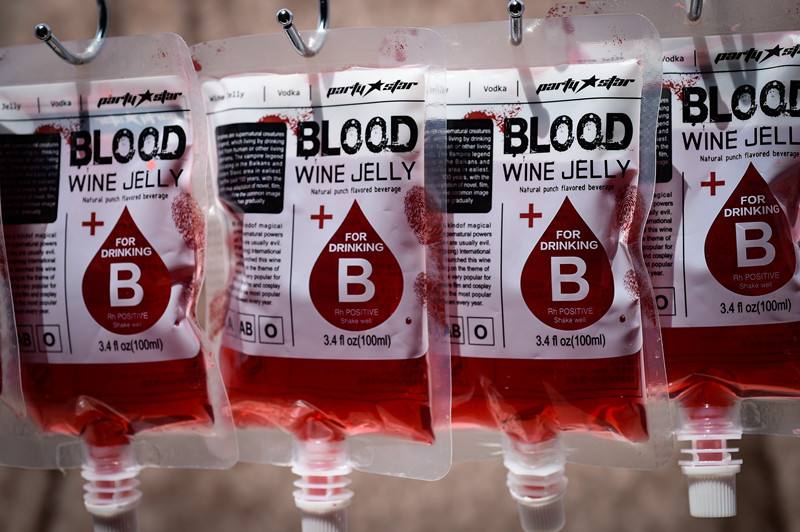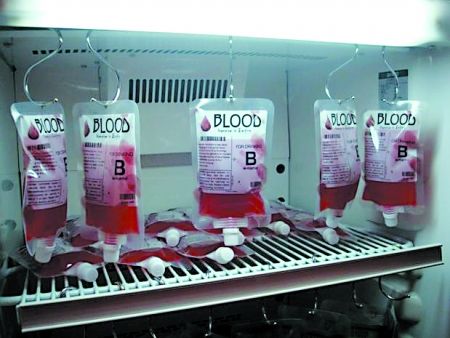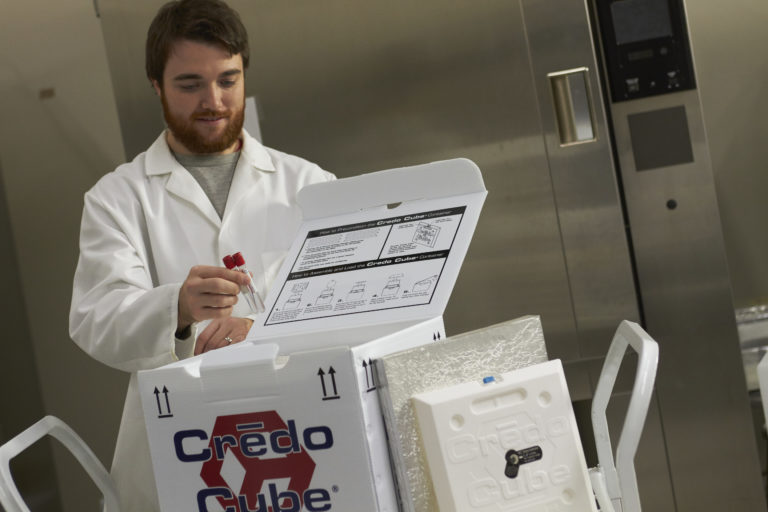Speed Global blood sample transportation makes full use of its leading advantages in global emergency logistics; actively develops the global life science cold chain market; provides professional life science cold chain transportation for various biomedical laboratories; clinical medical institutions; laboratory animal centers; government public welfare organizations service.
Speed Global's customers are in central laboratories; drug development and sales; vaccines; biological reagents; stem cell immunotherapy; clinical medical and other institutions.
(1) Domestic cold chain transportation:
Provide transportation temperature range: 2-8℃; 0-10℃; 15-25℃; 18-30℃; 0-30℃; -20 to -80℃ (dry ice); liquid nitrogen (-196℃); normal temperature, etc. .
A. Provide a variety of time-limited services: 8 hours; 12 hours; 24 hours; next day delivery; next day delivery, etc.;
B. Provide multiple modes of transportation: air transportation; special car transportation; high-speed rail transportation; hand-held transportation, etc.;
C. Central cities provide warehousing services; to meet the needs of customers for warehousing management services in multiple locations.
(2) International cold chain transportation of blood sample transportation:
Relying on Speed Global's global emergency transportation network; it can handle life science cold chain transportation from all over the world to China and China to all over the world; it can provide 2-8℃; 15-25℃; 0-30℃; -20 to -80 ℃ (dry ice); transportation temperature control solutions at room temperature; products related to animal and plant tissue sections; medical biological reagents; blood samples; stem cells; other time-sensitive and temperature-sensitive products.
We can assist you in the approval of relevant license documents; non-dangerous goods transportation certification; agent inspection and filing; customs declaration and inspection; providing temperature-controlled product packaging solutions; real-time temperature control records throughout the process.
Why choose SPEED GLOBAL's medical cold chain service?
(1) Intelligent temperature control: through the most modern Internet of Things technology; provide real-time monitoring of temperature control equipment; safety warning; data analysis; on-site printing and other services;
(2) Professional packaging: professional and experienced engineers will design and customize your proprietary cold chain packaging overall solution according to your product characteristics, transportation conditions and distance; let you enjoy convenience and ease;
(3) Safety and environmental protection: packaging materials are all food-grade recyclable HDPE; PU materials; guaranteed non-toxic; harmless; will not cause pollution to the environment and sent items;
(4) Professional customer service: The professional customer service team provides customers with real-time cargo tracking services; you do not need to call for inquiries; the customer service will keep you updated on the goods in transit in a timely manner;
(5) Crisis handling: Standardized crisis handling procedures allow alternative plans or emergency remedial measures when accidents occur; making crisis handling calmer.
The storage temperature for blood sample transportation is generally 2-8°C
When the blood sample is transported and stored at a temperature above 8°C; it is possible that bacteria that enter the blood inadvertently during the blood collection process will multiply to a certain extent; this will lead to the fatal danger of blood transfusion. 2-8°C can inhibit the growth of bacteria in the blood to a minimum.
The lower limit of 2°C is also important: red blood cells are very sensitive to freezing; if they are frozen, red blood cells will be destroyed; hemolysis will occur; this can lead to fatal danger.
Storage of blood samples (blood stations, blood storage points) according to blood types A, B, O, AB; blood components are stored in different layers of special refrigerators for blood banks or in different special refrigerators; and there are obvious signs.

The storage temperature and shelf life of blood samples are as follows:
Variety storage temperature storage period
1 Concentrated red blood cells (CR4±2CACD: 21 days, CPD: 28 days;
CPDA: 35 days;
2 Leukocyte red blood cell (LPRC) 4±2°C: 35 days;
3 Red blood cell suspension (CRC3) 4±2°C (same as concentrated red blood cells);
4 Wash red blood cells (WBC) 4±2°C: infusion within 24 hours;
5 Frozen red blood cells (FTRC) after thawing at -80°C: infusion within 24 hours;
6 Manual separation of platelet concentrate 22±2°C: 24 hours (normal bag) or: 5 days (prepared by special bag);
7 Machine-picked platelets 22±2°C: infusion within 24 hours;
8. Machine-collected concentrated leukocyte suspension 22±2°C: infusion within 24 hours;
9 Fresh liquid plasma 4±2°C: infusion within 24 hours;
10 Fresh frozen plasma -20°C/year;
11 Ordinary frozen plasma -20°C/four years;
12 Cryogenic precipitation -20°C/year;
13 Whole blood 4±2°C (same as concentrated red blood cells);
14 Prepare to launch frozen platelets and frozen red blood cells;
15 Other preparations shall be implemented in accordance with corresponding regulations;

Collection and examination of blood samples of recipients
After confirming the blood transfusion; the medical staff shall hold the blood transfusion application form and the labeled test tube; check the patient's name; gender; age; medical record number; ward/outpatient emergency department; bed number; blood type and diagnosis; collect blood samples.
The medical staff or specialized personnel will send the blood samples of the recipient and the blood transfusion application form to the blood transfusion department (blood bank); both parties will check item by item.
(one)
Please fill in the blood transfusion application form completely
Blood transport
Medical staff or specialists will go to the blood transfusion department (blood bank) to collect blood.
Both parties of blood collection and blood distribution must check the patient's name; gender; medical record number; outpatient and emergency department/ward; bed number; blood type validity period and blood matching test results; and the appearance of the preserved blood; if it is accurate, both parties must sign together. Can be issued.
(two)
Any blood bag that has one of the following conditions shall not be sent out:
1 The label is damaged or leaks blood;
2 The blood bag is damaged or leaking;
3 There are obvious clots in the blood (purple black);
4 Plasma is chylous or dark gray;
5 There are obvious bubbles, flocs or coarse particles in the plasma;
6 The interface between the plasma layer and red blood cells is unclear or hemolysis occurs on the interface when it is not shaken;
7 The red blood cell layer is purple-red;
8 Overdue or other conditions that need to be verified.
Blood transportation requires transportation method
Transport by refrigerated transport vehicles or packed in blood transport boxes with the help of airplanes, trains, automobiles or other means of transportation.
(three)
Blood transport box; the appearance and inner wall requirements are as follows
The box body should be sealed as a whole after the lid is closed; it can prevent dust, rain, and slip;
The appearance of the box and the surface of the inner wall are smooth and smooth without cracks; it can prevent liquid leakage;
The tank should be kept clean before loading blood; it should be easy to disinfect and clean.
Box material: It should be ensured that it is under normal use conditions; the box body is not deformed; the internal material does not spontaneously generate harmful gases.
The insulation performance is as follows:
There should be no obvious condensation on the outer surface of the transport box when loading objects at 4°C to 20°C.

Temperature control type:
Temperature control of fixed freezing point materials: during transportation; it should be able to maintain a suitable temperature; and the following matters should be noted:
When transporting whole blood and red blood cell components; do not use fixed freezing point materials or dry ice prepared at a temperature of -65°C or below. The fixed freezing point material should be placed on the uppermost layer of the blood and should not be in direct contact with the blood.
When transporting platelets, a special freezing point material is required; or a closed container filled with liquid at 20°C to 24°C is used instead.
Transport frozen plasma; when cryoprecipitating; use fixed freezing point materials or dry ice prepared at a temperature of -18°C or below.
When transporting frozen red blood cells; use a fixed freezing point material or dry ice prepared at a temperature of -65°C or below.
Note: Whole blood and red blood cell blood components do not include frozen red blood cells.
Previous: Vaccine cold chain transport
Next: None